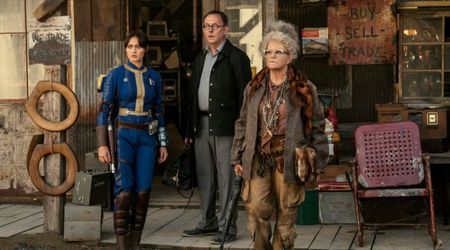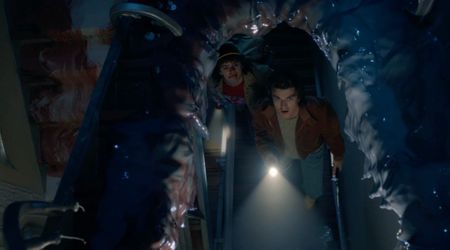'Penny Dreadful: City of Angels' shows 'Santa Muerte' in positive light but history hasn't treated her kindly

Within Mexican culture, the "Skeleton Saint" or Santa Muerte is a revered figure. Estimates say she has 10 to 12 million followers, on both sides on the US-Mexico border. Devotees believe she can protect them against violent death, assaults, accidents, and violence. Miracles play a huge role in her cult.
For this reason, she has found followers among the marginalized and dispossessed who have been increasingly ravaged by the violence in Mexico. Of late, migrants have also started praying to her to avoid being caught or killed while crossing the US-Mexico border.
In Showtime's upcoming 'Penny Dreadful: City of Angels' that draws from Mexican folklore, she is seen as the Vega family's deity and a force for good. Played by Lorenza Izzo, Santa Muerte is what stands against the evil represented by Magda, a shape-shifting demon played Natalie Dormer of 'Game of Thrones' fame.
Adriana Barazza, who plays the Vega family matriarch, Maria Vega, spoke exclusively to MEA WorldWide (MEAWW) about the pagan saint. One of the things she liked "tremendously" about the show was that it did not portray Santa Muerte in a negative light.
"Right now, currently, she is seen as something negative. But many people in Latin America, in Mexico, see her as something positive, as a spiritual guide of sorts. The show depicts the good side of what Santa Muerte represents and not the negative press that she gets," she said. She equated Santa Muerte and Magda as representing the good and evil voices within that influence decisions and actions.
Barazza's comments draw attention to the controversy around this pagan saint who is loved by those working at night or at dangerous jobs, such as taxi drivers, bar owners, police, soldiers, prison guards and prostitutes along with criminals, prisoners, and thieves.
Not surprisingly, her veneration has raised the hackles of both the Catholic Church and the Mexican government for different reasons.
The Mexican government sees her as a "narco saint" because of her popularity among those involved in the violent drug trade. Mexican authorities destroyed more than 30 of her shrines, erected near the city of Nuevo Laredo and in Tijuana in 2009, triggering protests among the populace.
For the Vatican, it is a question of faith. Since she is not an official saint, the Church has seen the rise in her veneration with dismay. The Vatican has repeatedly called the cult “satanic” since she is a personification of death, the antithesis of the "eternal life" promised in Christian theology. Her popularity directly threatens the Church's authority within the Mexican community, with many churches and roadside altars set up in her name.
Her cult has been strongly associated with the Mexican "Day of the Dead" (Día de Muertos), a fusion of indigenous beliefs around death and the Catholic 'All Soul's Day'. Santa Muerte, who is seen as the personification of Death, has her feast day on November 1, on the night before the Day of the Dead.
But some devotees also celebrate her feast day on August 15, signaling more ancient roots in Aztec and Mayan death deities. According to religious studies scholar R. Andrew Chesnut, author of 'Devoted to Death: Santa Muerte, the Skeleton Saint', devotees have begun to recognize Santa Muerte as the reincarnation of Mictecacihuatl, the pre-Christian Aztec goddess, who presided over a festival of death in August.
Her worship was a clandestine affair, done privately in homes, in the predominantly Catholic Mexican and Mexican-American community till as recently as 2001. But then, a poor woman called Enriqueta Vargas, a quesadillas seller in Tepito -- a dangerous neighborhood in Mexico City -- celebrated the first public ceremony in 2001, the night previous to All Saints Day. Since then, her cult has seen a meteoric rise.
Within the community, the "Bony Lady" or "Our Lady of Holy Death" as Santa Muerte is sometimes called, is seen in a positive light, listening to everyone's prayers democratically, bestowing miracles if the right offerings -- ranging from tobacco, flowers, fruit, incense, water, alcohol, coins, candies, and candles -- are made. It is this "positive" portrayal that the upcoming show will depict, which is more in keeping with how she is viewed by most Mexicans as opposed to the powers that be.
'Penny Dreadful: City of Angels' premieres on April 26 on Showtime.










